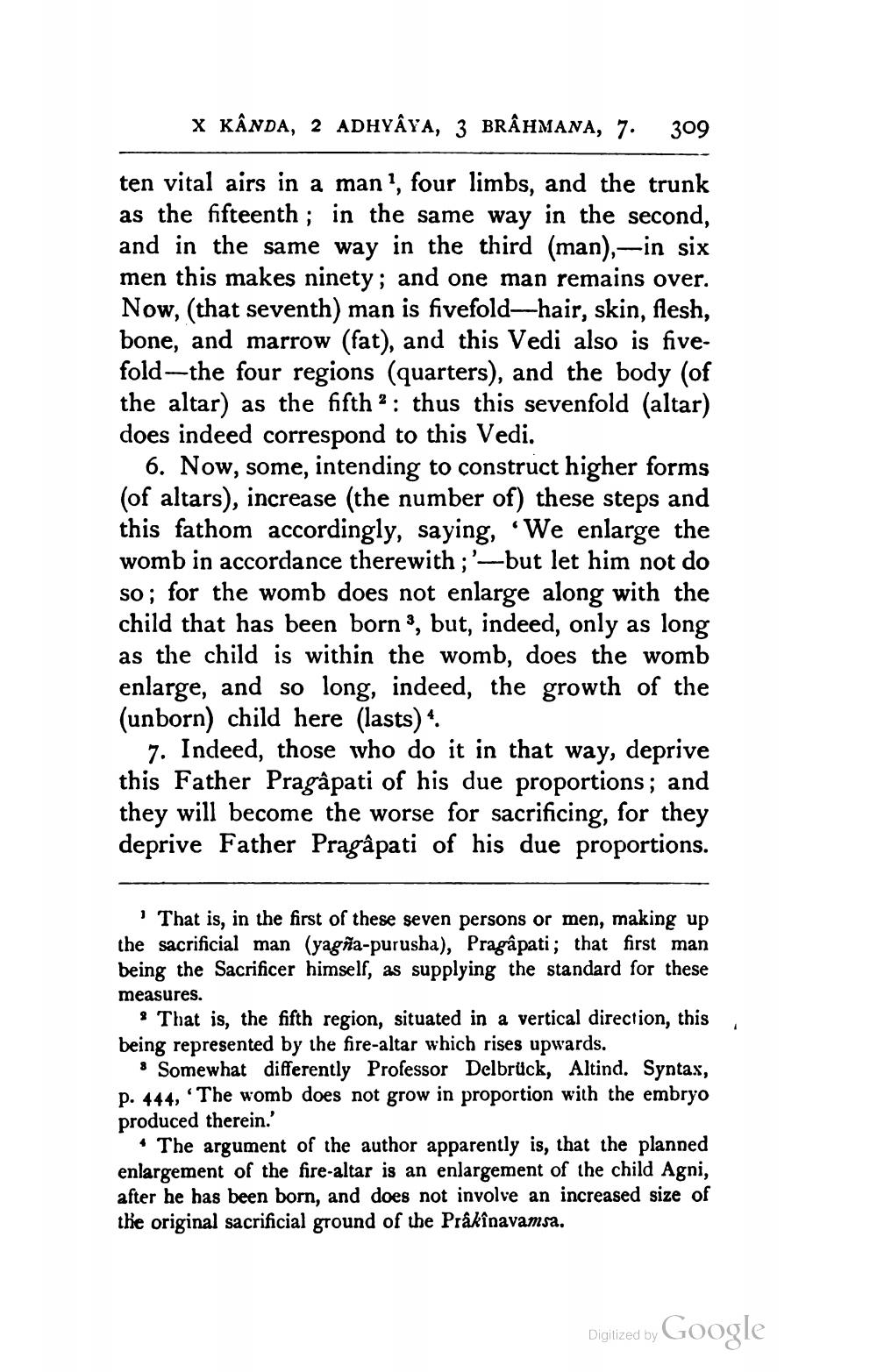________________
X KÂNDA, 2 ADHYAYA, 3 BRAHMANA, 7. 309
ten vital airs in a man1, four limbs, and the trunk as the fifteenth; in the same way in the second, and in the same way in the third (man),—in six men this makes ninety; and one man remains over. Now, (that seventh) man is fivefold-hair, skin, flesh, bone, and marrow (fat), and this Vedi also is fivefold-the four regions (quarters), and the body (of the altar) as the fifth: thus this sevenfold (altar) does indeed correspond to this Vedi.
6. Now, some, intending to construct higher forms (of altars), increase (the number of) these steps and this fathom accordingly, saying, 'We enlarge the womb in accordance therewith ;'-but let him not do so; for the womb does not enlarge along with the child that has been born 3, but, indeed, only as long as the child is within the womb, does the womb enlarge, and so long, indeed, the growth of the (unborn) child here (lasts).
7. Indeed, those who do it in that way, deprive this Father Pragâpati of his due proportions; and they will become the worse for sacrificing, for they deprive Father Pragâpati of his due proportions.
That is, in the first of these seven persons or men, making up the sacrificial man (yagña-purusha), Pragâpati; that first man being the Sacrificer himself, as supplying the standard for these
measures.
That is, the fifth region, situated in a vertical direction, this being represented by the fire-altar which rises upwards.
Somewhat differently Professor Delbrück, Altind. Syntax, p. 444, 'The womb does not grow in proportion with the embryo produced therein.'
The argument of the author apparently is, that the planned enlargement of the fire-altar is an enlargement of the child Agni, after he has been born, and does not involve an increased size of the original sacrificial ground of the Prâkînavamsa.
Digitized by
Google




